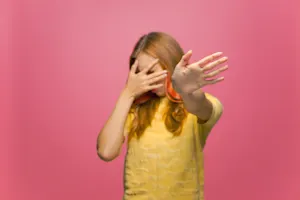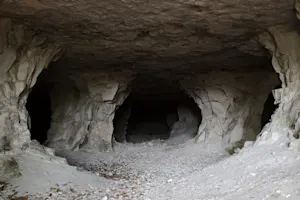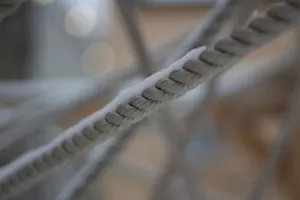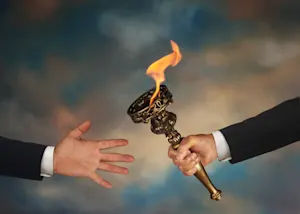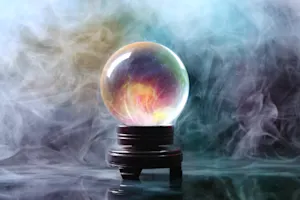What Makes This Word Tick
"Chiaroscuro" is an Italian term combining "chiaro" (light) and "scuro" (dark), perfectly encapsulating the balance between light and shadow. It's a technique beloved by artists to create depth and volume. Picture a spotlight illuminating one part of a scene while casting dramatic shadows elsewhere.
If Chiaroscuro Were a Person…
Chiaroscuro would be a mysterious but charismatic artist, delighting in evening gatherings with a penchant for dramatic flair. They'd have a knack for creating suspense yet always reveal just enough to keep everyone intrigued.
How This Word Has Changed Over Time
Originally coined during the Renaissance, "chiaroscuro" was a groundbreaking technique that evolved beyond painting to influence photography and film. Over centuries, its use expanded and is now a symbol of dramatic storytelling across media.
Old Sayings and Proverbs That Use Chiaroscuro
While not found in everyday proverbs, the concept of chiaroscuro reminds us of life's contrasts, much like the saying, "Every cloud has a silver lining." It embodies the yin and yang of storytelling—a balance permeating both life and art.
Surprising Facts About Chiaroscuro
Did you know Leonardo da Vinci was one of the earliest masters of chiaroscuro? His use of light and shadow brought paintings like the "Mona Lisa" to life. Moreover, filmmakers like Orson Welles often used chiaroscuro to heighten drama in classic films.
Out and About With This Word
Next time you're at an art gallery, see if you can spot the play of light and shadow. Look for chiaroscuro in unexpected places, like your favorite black-and-white film or even a dramatic sunset.
Pop Culture Moments Where Chiaroscuro Was Used
Film noir, anyone? This genre thrives on chiaroscuro, using stark contrasts to amplify suspense and mystery. From "Citizen Kane" to "Blade Runner," these visual styles owe a debt to this powerful technique.
The Word in Literature
In literature, chiaroscuro isn't directly referenced but its essence shines in narratives that explore moral complexities or character depth. Think of the murky moral struggles in a Dostoevsky novel or the light and dark of a Dickensian London.
Moments in History with Chiaroscuro
Imagine Rembrandt in his studio, redefining portraiture with shadows that give life to his subjects. Or the chiaroscuro lighting that added emotional weight to the speeches and iconic imagery of Winston Churchill during World War II.
This Word Around the World
Languages beyond Italian have adopted the term, especially in artistic circles. In Spanish, "claroscuro" and in French, "clair-obscur" convey similar meanings, proving the universal allure of this evocative expression across cultures.
Where Does It Come From?
As an import from Italian Renaissance vocabulary, chiaroscuro fused the concept of contrast both visually and philosophically. It marked a departure from flat, medieval styles towards dynamic and realistic imagery.
How People Misuse This Word
Sometimes someone's use of "chiaroscuro" to describe a generally gloomy day can be a bit of a stretch! It's meant to capture the dynamic play of light and shadow rather than just darkness or a cloudy sky.
Words It’s Often Confused With
Tenebrism: While similar, tenebrism is more extreme, emphasizing shadows over light.
Contrast: A broader term that doesn't necessarily pertain to light and shadow.
Monochrome: Lacks the dynamic interplay between light and dark inherent in chiaroscuro.
Additional Synonyms and Antonyms
Synonyms: Light-dark, shadowing, modeling
Antonyms: Flat, monotone, uniform
Want to Try It Out in a Sentence?
"The photographer's expert use of chiaroscuro transformed the ordinary portrait into a masterpiece, where light and shadow danced together in breathtaking harmony."


